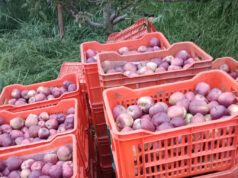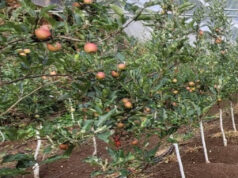The Asian Development Bank (ADB) has announced its plans to inject a substantial $130 million loan into the horticulture sector of Himachal Pradesh, signalling a major boost for the industry. This funding aims to revitalize farm productivity, improve irrigation facilities, and promote horticulture agribusinesses, with the ultimate goal of enhancing farmers’ income in the region.
The loan agreement, signed between the Government of India and ADB, paves the way for the Himachal Pradesh Subtropical Horticulture, Irrigation, and Value Addition Project. This ambitious project will specifically target the southern regions of Himachal Pradesh, where sub-tropical horticulture has traditionally taken a backseat to the dominant temperate horticulture in the northern regions. By diversifying crop cultivation and encouraging climate adaptation, the project aims to foster more equitable economic opportunities, social development and bolster the country’s food security.
Rajat Kumar Mishra, Additional Secretary of the Department of Economic Affairs, Ministry of Finance, emphasized that the initiative would not only revitalize the region’s agricultural landscape but also provide much-needed opportunities for crop diversification, leading to increased income for farmers.
The project takes its cue from a successful pilot initiative funded by ADB’s Readiness Facility Project. The pilot covered over 200 hectares of subtropical horticulture production and laid the groundwork for key drafts, including the Water Users’ Association (WUA) Act and the State Horticulture Development Strategy.
Spanning seven districts, namely Bilaspur, Hamirpur, Kangra, Mandi, Sirmaur, Solan, and Una, the project aims to directly benefit around 15,000 agricultural households. These families have been grappling with challenges such as limited access to irrigation facilities and crop damage caused by wild and stray animals, resulting in reduced farming activities or abandoned cultivation altogether.
To address these challenges, the project will focus on revitalizing existing irrigation schemes and constructing new ones, ultimately promoting agriculture on approximately 6,000 hectares of agricultural land. The collaboration between Water Users’ Associations (WUAs) and the state’s Jal Shakti Vibhag (Water Resources Department) and the Department of Horticulture (DOH) will play a vital role in strengthening irrigation and water management.
Market access for subtropical horticulture farmers will be a top priority under the project. To achieve this, Community Horticulture Production and Marketing Associations (CHPMAs) will be established at the cluster level, with district-level cooperatives providing support. These associations will play a pivotal role in promoting agribusiness development, facilitating business plan formulation, and designing essential value-addition facilities like sorting and packaging units, storage centers, and collection facilities. Moreover, the project will assist the CHPMAs in effectively managing these facilities.
Recognizing the significance of technology, the project will also modernize public and private subtropical horticulture nursery facilities. By improving plant health and enhancing farmers’ access to information and communication technologies and digital agro-tech systems, the project aims to provide real-time agro-advisory services and streamline CHPMA management.










